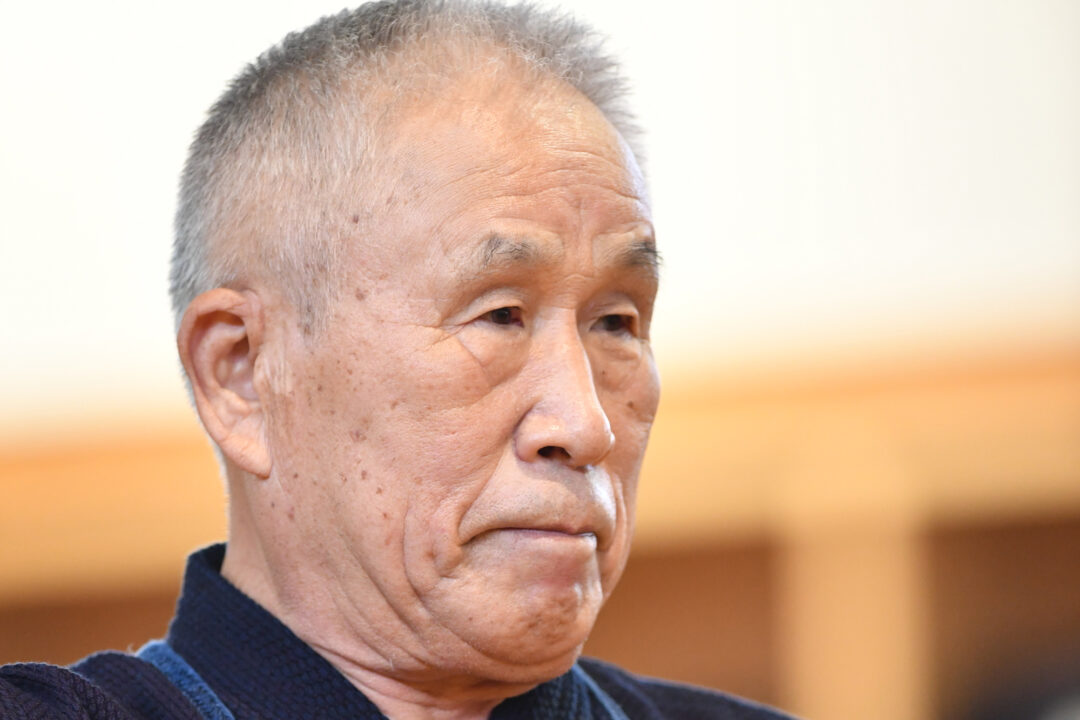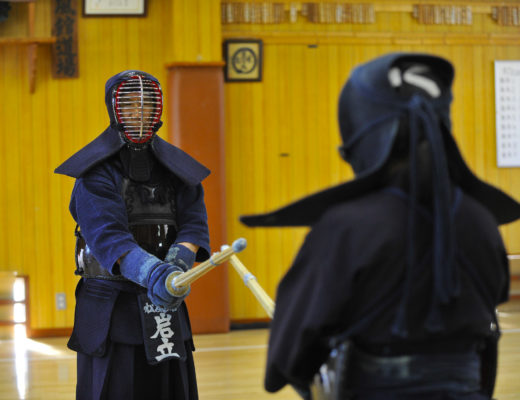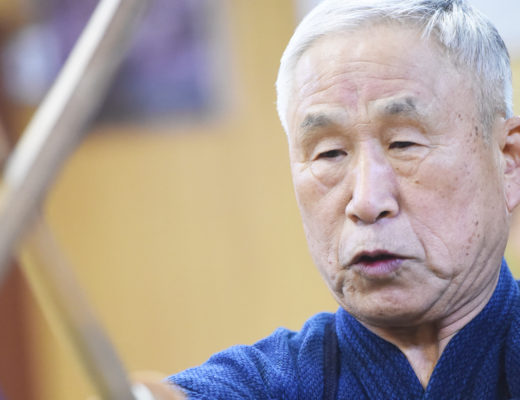KENDOJIDAI 2022.2
Suburi, Uchikomi, Kirikaeshi. It is said that the shortest way to improve is to steadily repeat Kihon Keiko regularly, but a flawed method will cause problems. Kihon Keiko become basics only when they lead to applied techniques. Let’s learn from a top Kendo practitioner how to do high quality Kihon Keiko.
Photo: Sasai Takamasa
Translation: Jouke van der Woude
It is important to attentively listen to instruction. In order to enrich each Keiko, it is important to clarify issues and to constantly devise and study.
Iwatate Saburo, 8th Dan Hanshi
Born in Narita City, Chiba Prefecture in 1939. After graduating from Narita High School, he joined the Chiba Prefectural Police, where he received instruction from Itoga Kenichi, Mabuchi Kokichi, and other instructors. After working as a Kendo instructor for the Chiba Prefectural Police, he retired. He is currently teaching Kendo to people of all ages at the Shofukan Dojo in Matsudo, Chiba Prefecture.
He is the president of the All Japan Kenyukai, vice president of the All Japan Kendo Dojo Federation, and instructor of the Shobi Gakuen University Kendo Club.
Maximum effort in Dan examinations
During Dan examinations, you will have your Kendo valued by the jury. Even if you think your Kendo is good, if the jury does not value it, you will not pass the exam. Therefore, it is important to have an appropriate instructor watch your regular Keiko and point out any flaws. Having a teacher is of utmost importance.
At the last 8th Dan examination held at the Nippon Budokan, 7 examinees passed the first round, and 5 examinees passed the second round. As a member of the jury, I observed the Tachiai for two days, but there weren’t many techniques being struck with all one’s might.
As I have mentioned in the past, I recommend that you check the points below when you are preparing for a dan promotion examination.
1. The position of the standing bow, and the position and etiquette of the simultaneous bow.
2. When you go into Sonkyo, don’t be early or too late, but in accordance with your opponent, put power into your knees and lower abdomen.
3. When you stand up, point your right foot towards the opponent’s midline with the intention of taking the center.
4. The Kensaki should pressure the center of the opponent, never turn to the right.
5. When you stand up, you should be in a position to take the initiative.
6. At this time, put strength in the lower abdomen and keep the upper body and hands relaxed.
7. The most important thing is to be in a position where you can strike at any time. You should know your own Maai.
8. Exhaust the abilities and techniques you are best at.
The rest of this article is only available for Kendo Jidai International subscribers!




